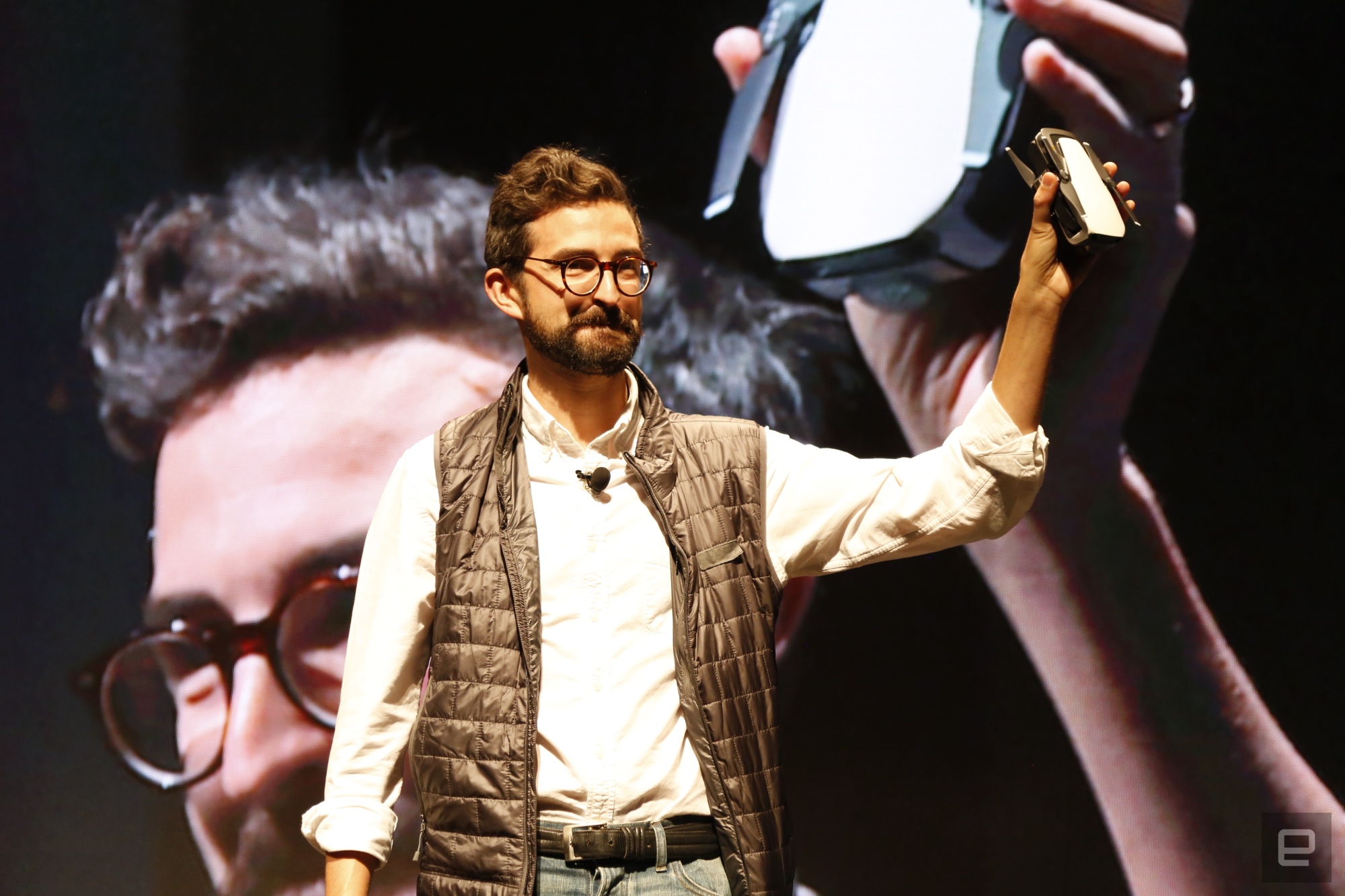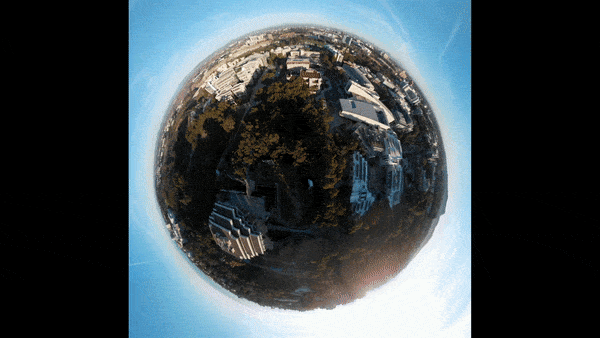
Yesterday’s leak might have spoiled the surprise, but DJI was still enthusiastic about unveiling its new Mavic Air drone in rainy New York this morning. While last year’s Spark was all about making drones accessible to a new generation of pilots, the $799/£769 Mavic Air is a high-performance creative machine that just happens to be incredibly small. When folded up, the Mavic Air is about as tall and wide as a smartphone — it’s so tiny, in fact, that a spokesperson had a few crammed into his vest without looking the least bit frumpy.
Despite its diminutive size, the Mavic Air can float for up to 21 minutes on a single charge. DJI claims that’s the longest flight time you’ll find in a drone this small. As expected, though, the big draw here is the addition of 4K video recording with three-axis stabilization — a feature conspicuously absent from the company’s recent Spark. That’s all thanks to a 1/2.3-inch CMOS sensor with a 24mm f/2.8 lens, which you’ll be able to use for capturing 12-megapixel stills and stabilized 4K video at 30FPS (not the 60FPS we were hoping for). You can still shoot full HD video at 120FPS. Finally, DJI added 8GB of onboard storage to the Air: If you forget your SD card or fill it up, you can still get the shot you’re looking for.
Another major new feature is the Advanced Pilot Awareness System (APAS), which works to detect obstacles in the environment and avoid them without any human intervention. If you’re flying straight toward something, the Air will be smart enough to either go around it or fly over it without the operator adjusting its path. DJI showed this off in a prepared demo, but we’ll be interested to see just how smart this new drone is when flying around in the real world.
New to the Air are a few Quickshot modes, including Asteroid — which stitches together 32-megapixel spherical panoramas — and Boomerang. The name basically says it all: The Air follows the same flight path as a thrown boomerang, which should offer some neat perspectives of the space around the pilot. Meanwhile, the ActiveTrack flight assistance mode helps (what else?) track objects automatically while keeping them locked in the center of the frame. The Air is the first DJI drone that can detect multiple subjects simultaneously, so you’ll need to manually select which one you want to track.

So yes, the Air is shaping up to be a remarkable flying camera. Almost more impressive is how DJI tweaked the Mavic formula to squeeze such impressive performance into a tiny package. A new ventilation system means the Air should be more resistant to overheating a new housing for the gimbal makes for more precise camera control. A new omnidirectional antenna design also means the Air can fly up to 2.5 miles away, as long as you’re using it with one of DJI’s smartphone-docking controllers. That controller has been redesigned, in case you were wondering, and comes with the Air. A neat but unmentioned feature is that the controller’s joysticks can actually be removed to make it even more portable.
And in case you were worried, the Mavic Air seems like a fun machine to fly — it’ll hit speeds as high as 42.5 miles per hour in sports mode and can withstand winds of up to 22 miles per hour. Granted, not everyone will want to push the Air to its limits. Less-adventurous users will probably appreciate the Air’s improved object avoidance more. The drone uses seven cameras to build a 3D map of its position around the aircraft, and if you manually steer it near an obstacle, it’ll juke out of the way. On top of that, DJI is playing up what it calls its GEO system: a real-time map that shows off where drone flying is prohibited as a result of federal regulation or potential safety issues.
from Engadget http://ift.tt/2DqcWaT
via IFTTT
